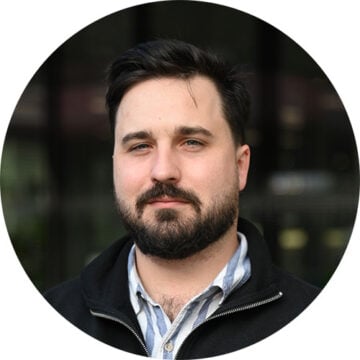 Venue : CGFB
Venue : CGFB
Thesis defense in french
Maxime Malivert
IINS
Équipe : Bordeaux Imaging Center – Photonic unit
Thesis directed by Daniel Choquet
Title
Adaptive optics integration in lattice light-sheet microscope for depth super-resolution imaging
Abstract
Fluorescence microscopy has become an indispensable tool for biological studies, allowing observation of structures of interest. Used on both fixed or living samples, it provides great specificity and high-contrast. Among these techniques, the optical sectioning offered by light-sheet microscopy (LSFM or SPIM) is a game-changer. It maximises image contrast whilst avoiding too rapid fluorescence loss of the samples. Lattice light-sheet microscopy (LLSM) improves these characteristics by using a thinner light-sheet over a larger field of view. As a result, it offers the possibility of fluorescence imaging inside thick samples down to around 30 μm. In addition, it allows with very high spatial and temporal resolution whilst almost obliviating phototoxicity.
As other microscopy techniques, it suffers from two drawbacks, both linked to the nature of the light, impairing the image’s quality. (1) Multiple interfaces and the inhomogeneity of samples induce optical aberrations that increase with imaging depth. Hence, disruption of the wavefront highly impairs the final resolution of the image. (2) The diffraction limit constrains the resolution to a minimum of ~200 nm and therefore prevents the observation of structures smaller than this limit. As a workaround to these phenomena, we decided to implement two methods on the LLSM: (1) adaptive optics to minimise optical aberrations in the depth of thick samples and (2) super-resolution microscopy using a single molecule localisation microscopy (SMLM) technique, called DNA-PAINT, to achieve nanometric resolutions. Our method, called AIO, is based on the images recorded by the camera, through refocusing of the light sheet (AF) and correction in response to indirect measurement of the wavefront, called (3N+).
This thesis presents the original design of the method, and the optimization of its parameters. AIO improves the resolution and contrast of diffraction-limited and SMLM resolution images. (1) In “classical” resolution, the AIO enables a plane wavefront to be recovered with an error of less than 50 nm RMS and in less than 40 seconds. Correcting aberrations also optimises the deconvolution process by restoring the system’s PSF. This gain is illustrated by the imaging of dendritic spines at 40 μm below the surface of organotypic brain slices and the acquisition of the second cell layer of Arabidopsis roots. (2) In super-resolution, we demonstrated the application of a DNA-PAINT protocol down to ~50 μm below the surface of brain slices and the value of adaptive optics for improving detection density and localisation accuracy in SMLM reconstruction.
Keywords
Lattice light-sheet microscopy, Adaptive Optics, Super-resolution microscopy, Single-molecule localization microscopy
Publication
Active image optimization for lattice light sheet microscopy in thick samples – Maxime Malivert, Fabrice Harms, Cynthia Veilly, Jerome Legrand, Ziqiang Li, Emmanuelle Bayer, Daniel Choquet, Mathieu Ducros. Biomed. Opt. Express. 2022-11-07. 13(12) : 6211. 10.1364/BOE.471757
Jury
Mme Fragola Alexandra, professeur des Universités, Université Paris-Saclay – Rapportrice
Mme Danglot Lydia, CR INSERM, Directrice Scientifique de Neurimag, IPNP – Rapportrice
Mr Choquet Daniel, DR CNRS, IINS, Examinateur
Mme Bayer Emmanuelle, DR CNRS, LMB, Examinateur
Mr Colombelli Julien, Directeur Plateforme Imagerie, IRB Barcelona, Examinateur
Mr Galland Rémi, CR CNRS, IINS, Invité
Mr Harms Fabrice, Responsable Scientifique, Imagine Optic, Invité

